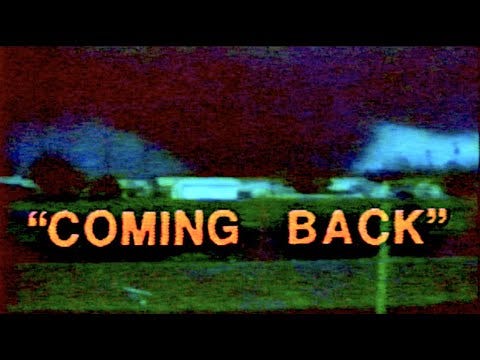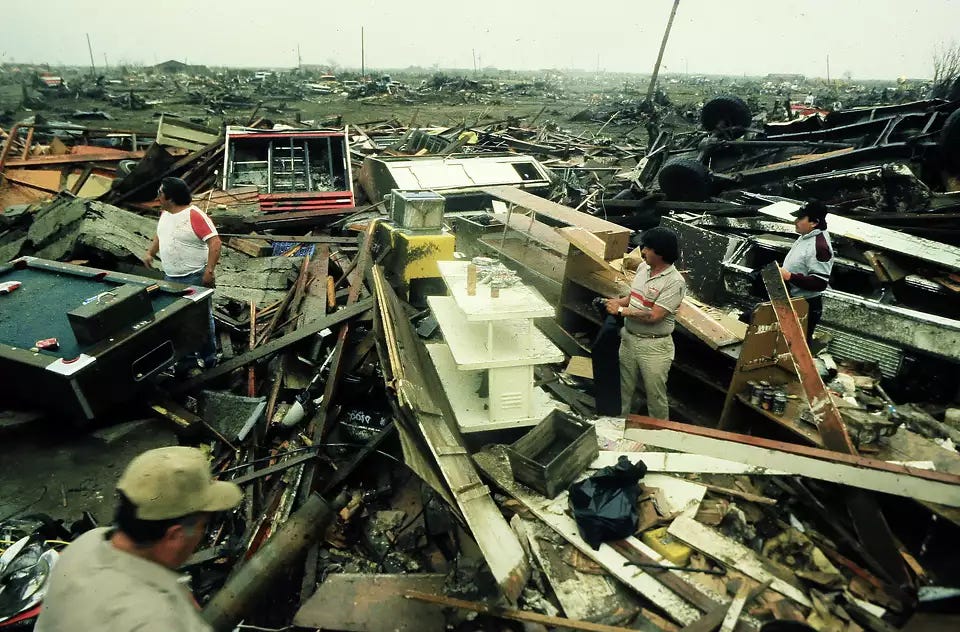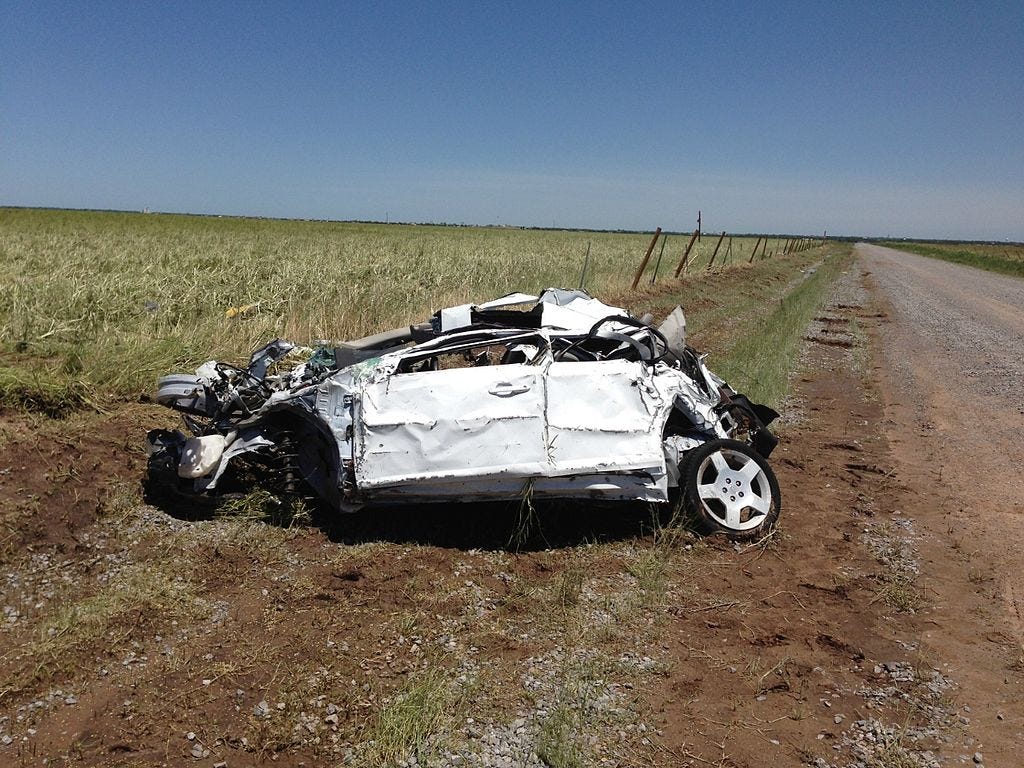There is a strong element of the crazed adrenalin junky in most journalists. We want adventure with the same fervor we seek the facts of a story. I was brimming with excitement driving toward hurricane landfalls and thought it thrilling that the road in the other direction was lined with vehicles seeking distance from the storm. I cannot recall all the hurricanes I covered but a few of the larger category names were Andrew and Opal and Fran, and many of weaker power, but still dangerous. Whether it was an earthquake or a flood or a commercial plane crash or a tornado or the Branch Davidian standoff in Waco, my reportorial soul cried for me to move in the direction of the story. Only infrequently did we think of the risks.
I was not, however, addicted to the dangers of TV news, and intended to live a long and interesting life. The idea of a story being worthy of putting your very existence in jeopardy was, to me, profoundly absurd, though, traditionally, it has been essential to get at facts. While on a brief assignment in Central America during the years of the Nicaraguan Civil War, I worked a few days with a combat photographer from Miami. He casually traveled the world from one conflict to the next, never getting enough of the dopamine high from frightening assignments. Over dinner in our hotel one evening, I suggested he was, maybe, just a little imbalanced.
“Oh Jimbo,” he said. “You don’t get it, man. The moment a bullet whizzes past your ear, it changes your life forever.”
I gave his assertion only momentary consideration before responding. “Maybe there’s a possibility you don’t get it, too,” I said. “Because the moment a bullet whizzes into your ear, it ends your life forever. Why take the chance?”
He did not feel further explanation was required.
There was, of course, an inevitability to being exposed to precarious situations while reporting, and my initial experiences with their consequences did not leave me as stunned as I had anticipated. My first hurricane was Anita, destined for landfall on South Padre Island down near the Mexican border. I was a radio reporter, and as police swept the beaches and hotels to insure complete evacuation, I hid behind a restaurant with plans to get a firsthand view of nature’s power. While the storm surge rose, I stood in a phone booth with an open line to the Associated Press in Washington, describing the water rising up my legs and debris flying through the air while also hoping the wind would die and the ocean might recede back across the sand. Eleven people died in Mexico as the storm drifted south of the Rio Grande and 25 inches of rain left 25,000 homeless in the mountains of Tamaulipas. The reporting, more foolish than courageous, got me an on-camera audition, which led to my first TV job.
The slowly developing characteristics of hurricanes make preparations possible for improving the safety of journalists on the scene. We can find leeward positions out of the wind for ourselves and the expensive broadcast gear. Tornadoes allow no such planning. Their unpredictability make them often deadly to anyone in the vicinity. A twister can spin up in a matter of minutes when the right conditions are present. The first time I saw the violence of such a weather phenomenon was at Wichita Falls in 1979. Our TV newsroom in Austin had gotten the wire reports describing an outbreak of tornadoes in the Red River Valley near Wichita Falls, and I was on a charter flight to report details of what was described by initial witnesses to be great devastation. Thousands of feet above the city, we shot sweeping panoramic views before approaching the airport. Wichita Falls looked as if a giant, petulant child had kicked over a toy town he had assembled. There were 58 fatalities in “Red River Outbreak,” and almost 2000 were injured. The deadliest funnel was an F4, only one category less than the strongest ever measured.
I am not sure why tornadoes became recurrent in my journalism but just over a year after the “Terrible Tuesday” in Wichita Falls, I was in Grand Island, Nebraska to report on a swarm of twisters that also included a deadly F4 with winds as high as 260 miles per hour. Seven funnel clouds scraped the Earth of most signs of human endeavor and left a path of rubble a half mile wide and six miles long. Instead of moving at a normal 30-40 miles per hour, the twisters spent four hours passing through the agricultural community just north of the Platte River and along the historic Lincoln Highway. The “Night of the Twisters” killed five people and injured 266 as it did a quarter billion dollars of destruction. Hundreds of homes simply disappeared. Even as I walked the streets of Grand Island and knew that what I was witnessing was real, I still struggled to process the scene as an actuality. The totality of the destruction was incomprehensible.
Nothing, however, had readied me for the 1987 tornadoes that came down out of the Davis Mountains of West Texas and obliterated the tiny desert town of Saragosa. The super cell had developed improbable cloud tops that reached 60,000 feet into the atmosphere and evolved into four twisters, including an F4. Saragosa was mostly a town of poor immigrant workers on Highway 17 between Pecos and Balmorhea. There were no warning sirens in the community and as the dark wall cloud approached, 100 people, a quarter of the population, was in the community center attending graduation ceremonies being held for their Head Start kindergartners. The cider block structure, lacking steel reinforcement, was not able to withstand F4 cyclonic winds, and 22 persons died as the structure collapsed. Children were saved by parents covering them with their bodies. There were a total of 30 fatalities in the community, most of whom were buried in the gravelly cemetery northwest of town. Although the storm was well-predicted by the National Weather Service and area media, Saragosa’s residents lacked technology and systems to receive timely warnings.
Saragosa, Texas, May 1987
Because of its vast land mass and the state’s geographic locale, Texas usually has more tornadoes annually than any other region of the U.S., which is why I was hardly surprised one spring day to get an emergency message from my editors telling me to race north on I-35 from Austin and toward the town of Jarrell. Warnings were blasting across all communications frequencies and devices. Photographer Kirk Swann and I looked at a dark cloud that covered much of the horizon and assumed it was an approaching rain storm, but we discovered later that it comprised the base of an F5 tornado, just one of 20 twisters that touched down in Texas on May 27, 1997. We went down the exit ramp and turned west, rushing through main street in the town of 400 people, and we saw no evidence of damage until we met a cop, standing, hands on his hips, outside his cruiser. I approached.
“Sounded pretty bad on the scanner, officer,” I said. “But we haven’t seen any damage.”
“Look harder,” he said. “Out there.” He pointed to what appeared to me like a field of sorghum with stripped stalks.
“Don’t see much.”
“‘Cause there ain’t nothin’ to see. The twister took it all.” He pointed again. “There were a lot of houses and people living out there. You see them now?”
“No, sir. Guess I don’t.”
I saw concrete foundations, upon closer inspection, and random two-by-fours standing upright, but no homes, people, or vehicles. I hoped they had escaped harm but 27 had been killed, including three entire families, the Igos, Moerhings, and Smiths. Remains of the dead were discovered in 30 different locations and had endured such trauma that they were difficult to distinguish from animals that had been dismembered and mutilated. When we drove over to Double Creek Estates to survey the neighborhood, much of the chip seal Ranch Road we crossed had been stripped away by the winds of 261-318 miles per hour.
The science of tornadoes is sufficiently frightening that I am marginally dumbfounded that a profession has arisen called Storm Chasers. These hearty, possibly misguided entrepreneurs and nature gazers, use all available technology to search atmospheric conditions to identify storms. They race to locations of anticipated funnel development and deploy their cameras and measurement instruments to record and understand tornadoes. Information they have provided meteorologists and emergency alert systems has had an impact on reducing the number of fatalities each year by improving advance warning systems. TV news, weather networks, and universities, dispatch these experts across the American plains each spring and summer and they usually return with astonishing videos and recordings of weather extremes. Their work has also spawned a legion of amateur chasers who crowd rural roads, gaping, as darkness, and possibly death, approach across the prairie.
The photographer who covered the Saragosa follow up stories with me, Austin Anderson, had begun chasing storms for the Weather Channel and other cable networks. I was always comforted by his presence when we were on assignments in tropical storms and other troubling circumstances, maybe because he was made of different stuff than me. One night on a charter flight returning from an assignment, our pilot managed to get our small, two engine plane, caught in a thunderstorm. Hail began pinging the wings and battering the fuselage. I was on the verge of bending the armrests into taffy. Austin, though, looked at me and shrugged.
“Not much I can do about this,” he said. “Guess I’ll take a nap.”
Which he did, snoring slightly, as the plane was kicked around the sky for another hour by ridiculous winds. I guess that fearlessness had a bit to do with putting him in a storm chaser car, shooting video out the window, as his team tracked a funnel on the ground near El Reno, Oklahoma on the evening of May 31, 2013. The tornado is still the widest ever recorded, 2.6 miles at its base, and contained some of the highest wind speeds ever observed at the Earth’s surface. Austin was in a car with Mike Bettes and Reed Timmer of the Weather Channel, and, as always, had his camera rolling, pointed out the window at the striated, black funnel, running parallel to them down an Oklahoma field.
In the car in front of them, were three other chasers. Tim Samaras, a research scientist and engineer, his 24-year-old son Paul, and Carl Young, a professional meteorologist and friend. No one had done more to advance storm chasing from a crazy hobby to serious scientific endeavor than Samaras. His work was disciplined, and he practiced safety, diligently, to the point where his investigations were funded with numerous grants from the National Geographic Society. Eventually, he was given a TV show, titled, predictably, Storm Chasers on the Discovery Channel. They were conducting lightning, sound, and air pressure research when the El Reno tornado formed and they set out along its path.
Tornadoes invariably exhibit erratic behavior and the trio ahead of Austin’s car had been judiciously watching the slightest movements off any course. Their conversations over the radio were being monitored by other researchers and law officers in the area. Meteorologist Young mentioned that it seemed weird that there was no rain around them and that the wind had grown “eerily calm.” Samaras reacted by saying, “Actually, I think we’re in a bad spot.” Shortly after that exchange, Oklahoma Highway Patrol Trooper Betsy Randolph said she heard the three men screaming over her radio. “We’re going to die! We’re going to die!” The sub-vortex winds grabbed their vehicle, lifted it off the road, and tossed the car off the pavement.
The Samaras and Young Car After the Twister
In the trailing car, the trio stopped and tried to reverse course, but the veering storm was already coming in their direction, too. The wind lifted them into brief weightlessness and threw the SUV into a field, where it rolled multiple times. No one was killed but my friend Austin suffered a broken breast plate, ribs, and damaged vertebra. When the storm had passed, Austin was airlifted to Oklahoma City for surgery and early recovery before getting a hospital charter flight home. His healing and rehabilitation took months. I doubted Austin would ever again pick up a TV camera or chase a storm.
The Car in Which Austin Anderson was Riding
Samaras, his son, and meteorologist Young, all died when the tornado crushed their car. Eighteen people were killed that day by a dispersed set of twisters, including a local man fascinated with tornadoes, Richard Henderson. He took a photo of the El Reno funnel and sent it to a friend while driving down the country road, which was the final act of his life. Henderson’s last words described debris hitting his truck, and then he was killed by the violence of the natural world that had made him curious.
Reporting on what a storm hath wrought is almost cowardice compared to going close to see and understand its power. I always thought tornadoes were to be run away from, not chased. There are, though, pressures to make a living. TV news executives want entrancing video. The closer a crew gets to a tornado, the more impressed are their editors, and the higher the pay. Adrenalin is not the only reason storm chaser photographers take their regular risks. They don’t just love the money, adventure, and independence, either; they love their craft. My buddy Austin’s back healed as camera technology shrank and he was able to go back out into the world of weather and get back on the job for the networks. He still runs to blizzards and hurricanes and tornadoes and floods and earthquakes.
And I like watching his work on TV







WoW...that's all I got...just eff'n Wow...thanks for sharing this...
I share in your crazed adrenalin excitement. That crazy stuff that shouts in your ears, “ Just one more shot!”